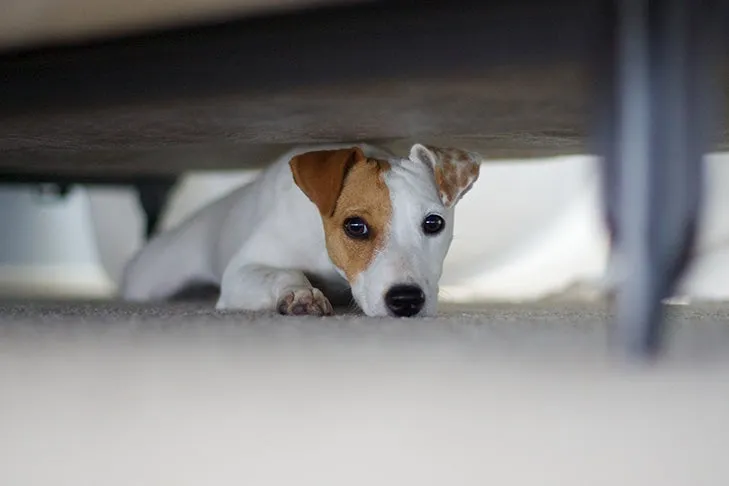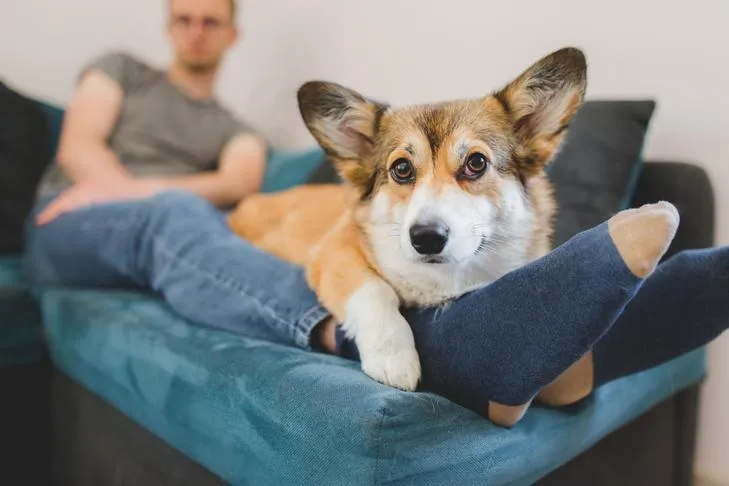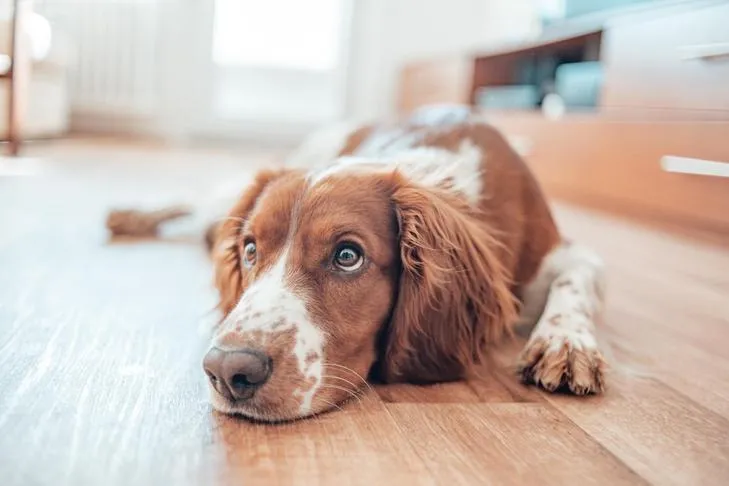Living with a dog experiencing anxiety can be challenging, both for the pet and the owner. When a dog is gripped by fear, their capacity to learn diminishes significantly; their focus shifts from you to the perceived threat, making even basic commands difficult to execute. Attempts at feeding treats or playing games often meet with disinterest, as anxiety can cause dogs to shut down, hindering the cognitive connections necessary for effective training. Understanding How To Train Anxiety Out Of A Dog begins with respecting their emotional state and creating an environment where learning can thrive.
Rather than attempting to train a fearful dog, the initial step is to acknowledge their feelings and either remove them from the stressful situation or modify it sufficiently for them to cope. Being your dog’s advocate means prioritizing their emotional well-being, even if it feels inconvenient to leave a situation. Training can — and should — wait until your dog is in a calmer, more receptive emotional state. Remember, even with older dogs, positive changes are possible; you can teach an old dog new coping mechanisms and behaviors.
 Anxious Russell Terrier hiding under a bed to cope with fear
Anxious Russell Terrier hiding under a bed to cope with fear
Recognizing Early Warning Signs of Anxiety and Fear
To effectively help your dog overcome their fears, you must become adept at reading their body language. Identifying the subtle, early warning signs of anxiety and fear allows you to intervene before your dog becomes overwhelmed. Pay close attention to how your dog reacts in various situations to pinpoint their specific triggers. Once these triggers are identified, you can begin to proactively address them.
While obvious signs of fear like cowering, shaking, or running away are easy to spot, the goal is to prevent your dog from ever reaching such a distressed state. It’s crucial to look for the often-misunderstood indicators that your dog is uncomfortable. These signs include:
- Lip licking: Not related to food, often quick and subtle.
- Yawning: Out of context, not tired.
- Panting: When not hot or after exercise.
- Avoidance or looking away: Refusing eye contact or turning their head.
- Ears back/flattened: A clear sign of apprehension.
- Tail tucked: Indicating fear or submission.
- Body stiffening: Tensing muscles, ready to react or flee.
- Whining or low growls: Vocalizations of discomfort.
- Subtle trembling: A slight shake indicating internal stress.
- Excessive shedding: A physiological response to stress.
- Inappropriate urination/defecation: In extreme fear or stress.
If your dog consistently exhibits these signs, it’s time to focus on building their confidence and helping them confront their fears in a secure and constructive manner. For specialized assistance, consider consulting a professional dog trainer or a certified animal behaviorist.
 Pembroke Welsh Corgi seeking comfort by resting on its owner's feet on the couch
Pembroke Welsh Corgi seeking comfort by resting on its owner's feet on the couch
Building Core Confidence
Whether your dog’s anxiety stems from past trauma or insufficient socialization, significant progress can be made in helping them face their fears. It’s important to manage expectations; a naturally nervous dog may not transform into an outgoing socialite, but they can certainly become more comfortable and relaxed in their daily life.
General confidence-building strategies are vital for how to train anxiety out of a dog. Firstly, establish a reliable routine to make their world more predictable and secure. Secondly, teach fundamental obedience behaviors. Finally, integrate these behaviors into “life rewards,” where your dog performs a command to earn something they desire, giving them a sense of control over their environment. For instance, ask them to sit before receiving their dinner or to lie down before being allowed into the yard. Teaching new challenges, like some tricks to teach an old dog can also be incredibly beneficial.
Participating in dog sports, even without the intent to compete, offers another excellent avenue for building confidence. The true value lies in the experience of confronting novel challenges. Agility training, for example, helps dogs conquer obstacles such as seesaws and jumps, fostering a belief in their own capabilities and resilience.
Implementing Desensitization and Counterconditioning
To address specific anxiety triggers, the powerful techniques of desensitization and counterconditioning are indispensable. The core principle is to create positive associations with the very things that frighten your dog. This process requires exposing your dog to their triggers at an intensity level where they do not react—this is known as staying “below threshold.” This might mean standing 20 feet away from a stranger or being in the same room as a vacuum cleaner that is turned off.
Once your dog is below their threshold, you can pair this exposure with something highly rewarding, such as high-value treats or their favorite toy. When your dog shows happiness or relaxation at that distance from the trigger, gradually and incrementally increase the intensity of the exposure, always pairing it with rewards. Over time, you can slowly work towards the full-blown situation. This method, though time-consuming, is incredibly effective for modifying your dog’s emotional response. This deliberate approach to behavior modification is akin to carefully planned out of the dog house training strategies, aimed at resolving core issues.
 Calm Welsh Springer Spaniel resting peacefully at home after successful anxiety training
Calm Welsh Springer Spaniel resting peacefully at home after successful anxiety training
Practical Tips for Success
As your dog gains confidence, you’ll find it easier to train them in more varied situations and introduce new distractions. In the interim, however, teaching new behaviors to an anxious dog requires a thoughtful approach. Here are some key tips to ensure successful anxiety training:
- Employ Positive Training Methods Exclusively: Focus on rewarding desired behaviors and redirecting unwanted ones, rather than resorting to punishment. Positive reinforcement builds positive associations with the training process and strengthens your bond. Consider teaching useful tasks like how to train dog to ring bell to pee, which can empower your dog and give them a sense of purpose.
- Cultivate Patience: Avoid setting unrealistic expectations. If your dog is stressed in a group training class, switch to private lessons or practice exercises at home where they feel more secure.
- Respect Your Dog’s Pace: Remember that fear impedes learning. Your anxious dog might take longer than average to master new behaviors, and that’s perfectly normal.
- Teach Nose Targeting: This simple and fun “touch” behavior can be incredibly useful. You can use it to encourage your dog to approach new people or other dogs, and it serves as an excellent tool to redirect and distract them around their triggers. This skill, like learning how to stop a dog from chewing on shoes through consistent training, reinforces positive coping mechanisms.
Conclusion
Training anxiety out of a dog is a journey that requires patience, understanding, and consistent positive reinforcement. By recognizing early warning signs, diligently building confidence, and implementing techniques like desensitization and counterconditioning, you can significantly improve your dog’s quality of life. Always remember to prioritize your dog’s emotional well-being and seek guidance from professional trainers or behaviorists when needed. With dedication, you can help your canine companion navigate the world with greater comfort and happiness.
